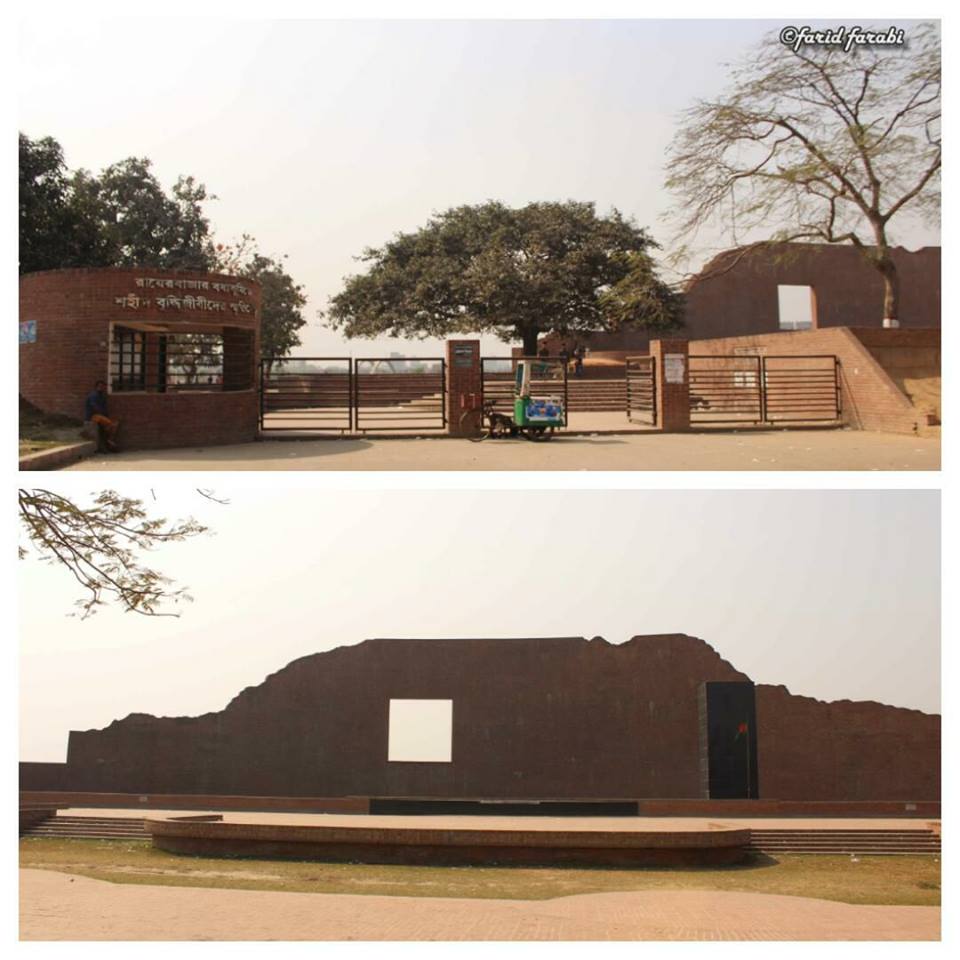
Rayer Bazar Shaheed Buddhijibi Memorial on the outskirts of the city.
Two days before the declaration of independence in 1971, the Pakistani aggressors, in collusion with their local allies, kidnapped and brutally killed a number of eminent intellectuals. The aim was to strike at the intellectual space of independent Bangladesh. So that this nation cannot stand very easily. This loss was truly irreparable. Two days after the victory, on the 17th, the bodies of these intellectuals were found in an abandoned brick field in Rayerbazar with numerous bodies. Later, the ‘Rayer Bazar Shaheed Buddhijibi Memorial’ was built for their memory.
The memorial was jointly designed by architect Farid Uddin Ahmed and architect Jami Al Shafi. Construction began in 1997 and was completed in 1999. The area of the whole complex is about four acres. The height of the main altar is 2.44 meters. One of the main parts of the monument is a 117 meter long wall with two broken parts at the corners on both sides. In the middle of the walls is a 6.10 m square window behind which the sky and the crimson sun floating like a frame heralds the arrival of a new day. The main square pillar of black granite stone rises from the reservoir in front of the wall. This main pillar of granite is considered a symbol of mourning
.
The main gate of the slaughterhouse is next to the memorial. This slaughterhouse area is divided into sarees across a wide area. If the martyrs of that day had survived, they might have taken this country much further.
If you want to go to Rayerbazar Memorial Complex, you have to take a bus from Farmgate or Gulistan to Mohammadpur and come to Mohammadpur bus stand. From here rickshaws can be easily taken to the memorial. Besides, the memorial can also be reached by crossing the embankment through Azimpur section in CNG autorickshaw.
As a proud Bangladeshi, we must know the history of the language movement, the war of independence and the history of oppression. Get to know yourself and give the latest members of the family a chance to learn and see the history of the roots.